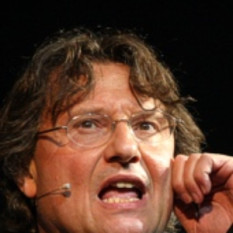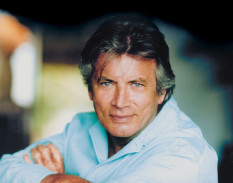In the record industry, a single is a song usually extracted from a current or upcoming album to promote the album. Singles are distributed through a number of ways; originally, they were packaged as "single" records with one or two other songs and sold before the release of the album. However, this practice has lessened as the Internet has made music more readily available to the public free of charge. Also, singles are commonly played on the radio, and with the advent of music videos in the 1980s, video versions of singles have become a common way of distributing the song to the public.
The basic parameters of the music single were established in the late 1800s, when the gramophone record began to supersede phonograph cylinders in commercial music. Gramophone discs were manufactured with a range of playback speeds (from 16 rpm to 78 rpm) and in several sizes (including 12"). By around 1910, however, the 10-inch 78 rpm shellac disc had become the most commonly used format.
The inherent technical limitations of the gramophone disc defined the standard format for commercial recordings in the early 1900s. The relatively crude disc cutting techniques of the time and the thickness of the needles used on record players limited the number of grooves per inch that could be inscribed on the disc surface, and a relatively high rotation speed was necessary to achieve acceptable recording and playback fidelity. 78 rpm was chosen as the standard because of the introduction of the electrically powered synchronous turntable motor in 1925, which ran at 3600 rpm with a 46:1 gear ratio, resulting in a rotation speed of 78.26 rpm.
These factors, combined with the 10" diameter of standard discs, thereby limited the duration of recording available on each side of a disc to around three minutes. These manufacturing limits in turn exerted a direct effect on the composition of music, as songwriters and performers increasingly tailored their output to fit the new medium.
The 3-minute single remained the standard into the 1960s when the availability of microgroove recording and improved mastering techniques enabled recording artists to increase the duration of their recordings—The Beatles' 1968 7-minute single Hey Jude was a deliberate challenge to this long-standing 3-minute standard for pop singles.
Singles have been issued on various formats, including 7-inch, 10-inch and 12-inch vinyl discs (usually playing at 45 rpm); 10-inch shellac discs (playing at 78 rpm); cassette, 3 and 5-inch CD singles and 7-inch plastic flexi discs. Other, less common, formats include singles on digital compact cassette, DVD, and LD, as well as many non-standard sizes of vinyl disc (5", 8", etc.).
The most common form of the vinyl single is the 45, the name for which is derived from its play speed, 45 rpm. The standard diameter of a 45 is 7".
The 7" 45 rpm record was introduced in 1949 by RCA as a smaller, more durable and higher-fidelity replacement for the 78 rpm shellac discs. The first 45 rpm records were monaural, with recordings on both sides of the disc. As stereo recordings became popular in the 1960s, almost all 45 rpm records were produced in stereo by the early 1970s.
Although 7" remained the standard size for vinyl singles, 12" singles were introduced for use by DJs in discos in the 1970s. The longer playing time of these singles allowed the inclusion of extended dance mixes of tracks. The 12" single is still considered a standard format for dance music, though its popularity has declined in recent years.
The sales of singles are recorded in record charts in most countries in a Top 40 format. These charts are often published in magazines and numerous television shows and radio programs count down the list. In order to be eligible for inclusion in the charts the single must meet the requirements set by the charting company, usually governing the number of songs and the total playing time of the single.
In popular music, the relative commercial and artistic importance of the single (as compared to the EP or album) has varied over time, technological development, and according to the audience of particular artists and genres. Singles have generally been more important to artists who sell to the youngest purchasers of music (younger teenagers and pre-teens), who tend to have more limited financial resources and shorter attention spans. Perhaps the golden age of the single was on "45's" in the 1950s and early 1960s in the early years of rock music. Starting in the mid-sixties, albums became a greater focus and more important as artists created albums of uniformly high quality and coherent themes, a trend which reached its apex in the development of the concept album. Over the 1980s and 1990s, the single has generally received less and less attention as albums, which on compact disc had virtually identical production and distribution costs but could be sold at a higher price, became most retailers' primary method of selling music. The single became almost exclusively a promotional tool for radio play and to appear on television via the video clip.
Dance music, however, has followed a different commercial pattern, and the single, especially the 12-inch vinyl single, remains a major method by which dance music is distributed.
As of 2006, the single seems to be undergoing something of a revival. Commercial music download sites reportedly sell mostly single tracks rather than whole albums, and the increase in popularity seems to have rubbed off on physical formats. Portable audio players, which make it extremely easy to load and play songs from many different artists, are claimed to be a major factor behind this trend.
A related development has been the popularity of mobile phone ringtones based on pop singles (on some modern phones, the actual single can be used as a ringtone). In September 2007, Sony BMG announced they will introduce a new type of CD single, called "ringles", for the 2007 holiday season. The format will include three songs by an artist, plus a ringtone that is accessible from the user's computer. Sony also announced plans to release 50 ringles in October and November, while Universal Music Group expects to release somewhere between 10 and 20 titles.
In a reversal of this trend, a single has been released based on a ringtone itself. The Crazy Frog ringtone, which had become a cult hit in Europe in 2004, was released as a mashup with Axel F in June 2005 amid a massive publicity campaign and subsequently hit #1 on the UK charts. .






